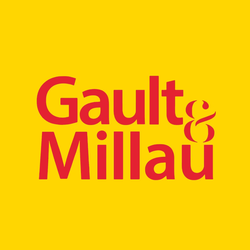
Gault et Millau: Recipes for a tasty migration to Symfony and Cloud Computing
Find out how the famous restaurant guide Gault & Millau has migrated its websites to Symfony and Platform.sh to gain more autonomy and save time.
I approached SensioLabs because as a Symfony developer for 10 years, their cloud hosting offer at the time was appealing. Then to address our issues beyond hosting, we started a threeway conversation with SensioLabs and Platform.sh. It resulted in a migration, a successful setup, and an optimization of our workflow that has been working very well ever since.
Kevin Peron, CTO at Gault & Mil
The company
Gault & Millau is a French dining guide founded in 1972. Today, it lists restaurants and provides growing support for innovation in gastronomy. Gault & Millau has always used its expertise to promote new talents and young chefs. It is now present in 15 countries and is in constant evolution, focusing on the analysis, inspection, and selection of the highest quality artisans, producers, hotels, wines, wineries, and champagnes. The guide also includes all sorts of new domains, such as rum, and an encyclopedia of flavor that categorizes every possible ingredient that exists.
In addition to its guide, Gault & Millau offers B2B certification services, which consist of analyzing and validating the nutritive and organoleptic values of certain products for major brands that are seeking certification. Gault & Millau also has several event-related business activities, particularly partnerships with major brands.
The issues
These activities required that Gault & Millau websites be fully redesigned, to support the company’s growth and continue providing high-quality services. That’s what launched a digital revolution: the update didn’t concern only the backend technology, frontend technology, or database. It was all three at once, as well as the infrastructure.
For this large-scale migration, Gault & Millau, which initially operated a single-page application, shifted to a more standard web architecture design. There were also native mobile apps that were turned into PWAs. The original relational database became a NoSQL database. The company’s backend went from Python/Django to Symfony, while the frontend went from Angular to Symfony/Twig/Bootstrap to be responsive and compatible with all devices.
The solution: Cloud Infrastructure Workshop
Defining a complete map of the infrastructure that will detail long-term, scalable operations, optimized, and adapted to short and long-term business needs.
Optimizing and dimensioning hosting capacities.
Designing and separating existing services to create an ideal level of inter-service communication capable of handling global project requirements.
Setting up a monitoring repository to understand the technical and business uses of the application.
Industrialization map of the deployment process to ensure continuous optimal performance.
The story
At the very beginning of this migration and transformation project, Gault & Millau’s technical team discovered Platform.sh via SensioLabs, the creator of Symfony and its team of web development experts. When the time came for the redesign, SensioLabs organized a Cloud Infrastructure Workshop with Gault & Millau before setting up the servers. The workshop resulted in the creation of an infrastructure optimized with Symfony that follows development best practices.
In a second phase, SensioLabs introduced Gault & Millau to its partner Platform.sh, the automated hosting solution for continuous deployment. Platform.sh allowed Gault & Millau team to create dynamic environments that were easy to pilot, expandable and scalable. Even though Gault & Millau was only working with SensioLabs at that time, the Platform.sh team was called upon for the onboarding phase, providing timely support.
Gault et Millau Recipes for a tasty migration to Symfony and Cloud Computing
Deploying this new infrastructure and organization, and taking advantage of SensioLabs’ support from the very beginning of the project, has made Gault & Millau extremely agile. A correction or change request can now be tested and deployed within an hour. Before, requests had to be transmitted to offshore teams and executed with a different set of tools, a fairly cumbersome process that often took weeks.
It’s cost-effective
Kevin Peron, CTO at Gault & Millau
Today, Gault & Millau team is truly agile in terms of the technology it needs. The team must move fast and be able to react quickly. Requests for changes and tests are received every day.
Gault & Millau’s primary goal for this migration was to manage various country-specific websites by subdomain and standardize them worldwide. The main difficulty with the project was the management and use of data, which is strictly separated by country. Each country is a licensee with its own right to use the brand, its own market, and its own data.
Managing certificates and subdomains by country was the biggest challenge since the scale is then shifted to that of a multisite project. Thanks to Platform.sh’s onboarding team, everything was set up within a few days. The process wasn’t complicated in terms of infrastructure since it only involves one application and database. The back office was the most massive piece to manage, with all the data, while the front office was managed by subdomain in multiple languages with translations.
Another decisive change the company experienced with the shift to Platform.sh was the savings in terms of time and teams. Once a foundation was set up for all the country-specific websites, it became much faster and easier to update various elements and standardize the sites. The goal was to avoid hiring more personnel. Although the team wasn’t necessarily trained in DevOps, it could handle everything internally, which was an essential requirement. Even regular developers were able to master the console and understand the Platform.sh tools, which has made them fully independent.
Lastly, the most critical aspect of Gault & Millau’s country-specific website development was scalability. Being able to deploy services just by modifying the configuration file is very practical, and allows its team to move quickly throughout the process, optimizing time and resources.